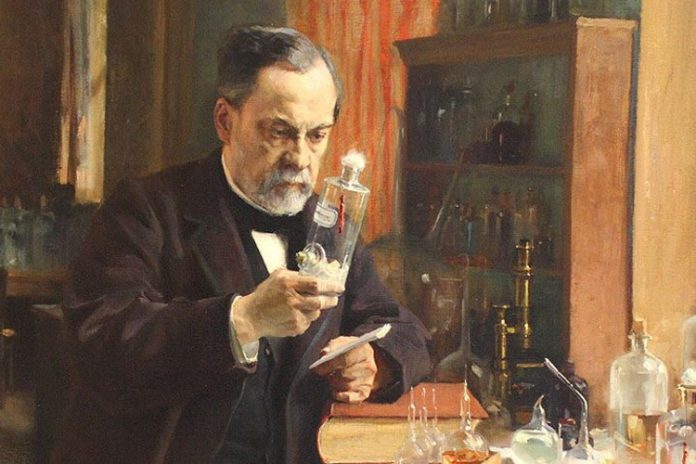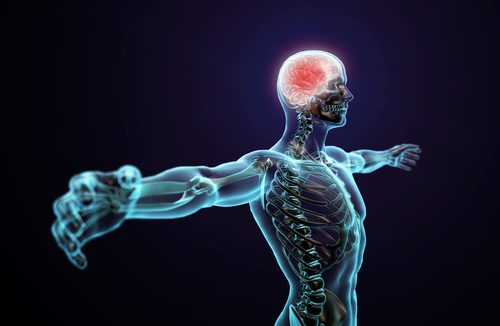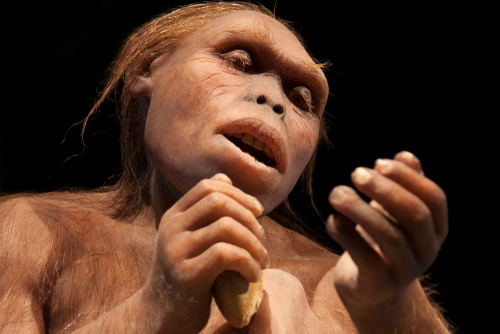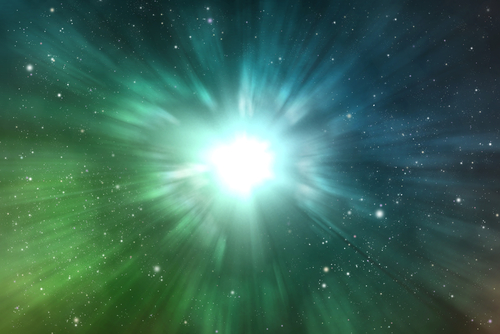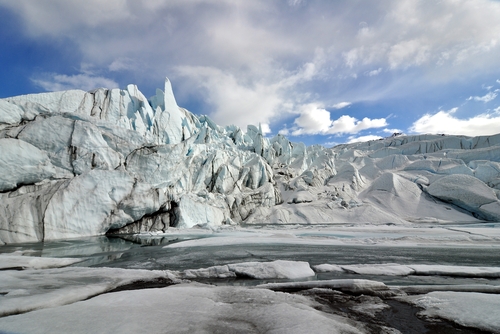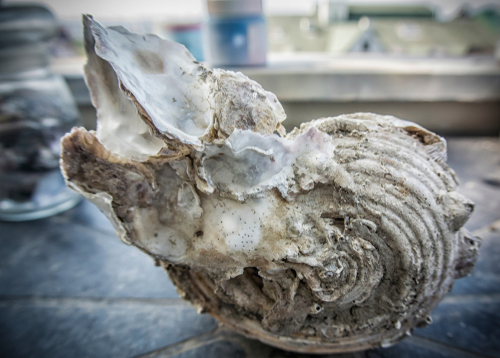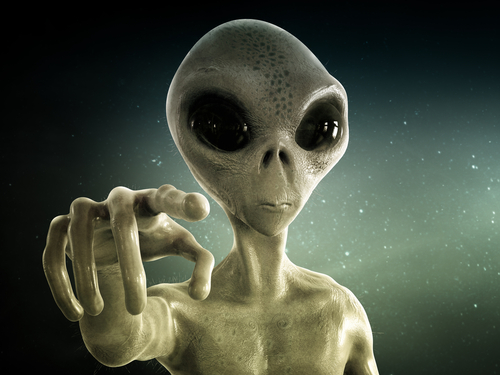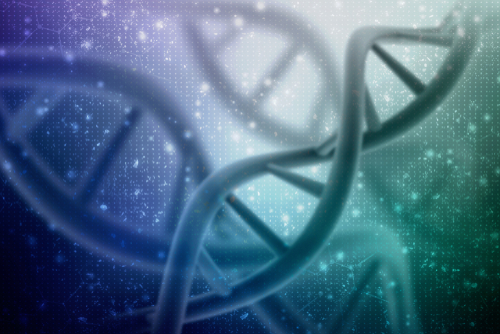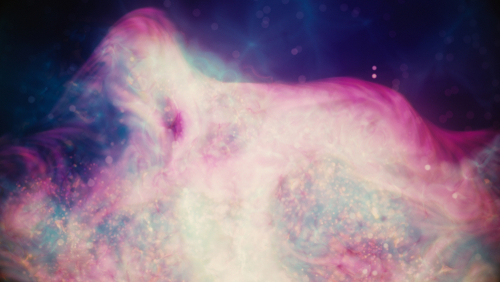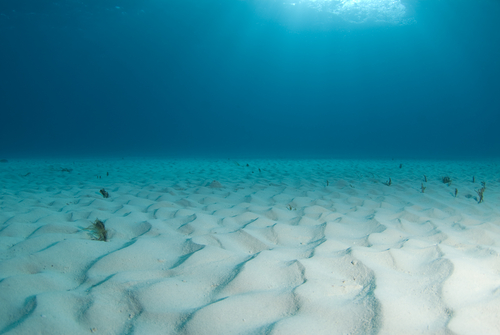Evolution has been the topic of countless dinner table arguments and court room debates for more than a century. Over the years, the science supporting evolution has continued to amass, challenging Creationists to come up with arguments which seem to be at once both more sophisticated and more far fetched. Below we list 30 of the most common Creationist arguments and the ways in which scientists respond.
Evolution is just a theory.
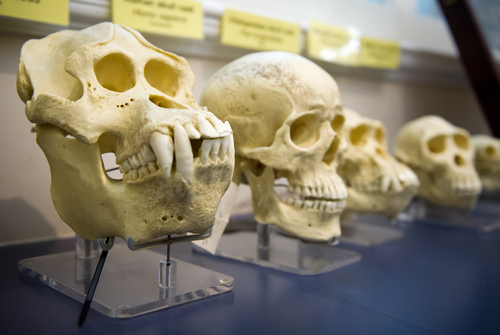
The “theory of evolution” is exactly that, assert Creationists, a theory. Otherwise it would be called the “fact of evolution” or the “scientific law of evolution,” right? Well, no.
In school, we may learn that the term “theory” refers to something slightly more certain than a hypothesis but less concrete than law. However, the National Academy of Sciences declares a theory to be a “well-substantiated explanation of some aspect of the natural world that can incorporate facts, laws, inferences, and tested hypotheses.” And so, just like the theory of relativity or the atomic theory, the theory of evolution implies much more certainty than it does doubt.
No one has ever observed evolution.
By definition, evolution consists of many small changes over a long period of time, as in hundreds of thousands or millions of years. Since no human has ever lived hundreds of thousands of years, it follows that large evolutionary changes have not been observed directly.
And yet, we’ve observed plenty of small evolutionary changes in microevolution. Look at a photo of your favorite dog breed from 100 years ago. Does it look like it does today? You’re likely to notice quite a few changes. That’s just one example. In fact there are so many examples of small evolutionary changes occurring that scientists practically take them for granted. Every documented observation of microevolution implies macroevolution since all of the small changes accumulate into larger changes.
Since evolution can’t be tested or re-created, it’s not scientific.

If you study the fossil record, you’ll find ample evidence to support the idea that organisms have evolved over time. It’s true that scientists may not have been around to observe first-hand every adaptation. But the indirect evidence as illustrated by the fossil record is compelling and unambiguous. In the same way that physicists need not see subatomic particles directly to know that they exist, scientists studying evolution do not need to witness adaptations to know that they have occurred in every organism.
Some of the world’s most famous scientists have been Creationists.
That’s true. Charles Babbage, Leonardo da Vinci, Michael Faraday, Lord Kelvin, Carolus Linnaeus, Joseph Lister, and Louis Pasteur are just seven of dozens of well-known scientists throughout history who were Creationists. Louis Pasteur, in fact, was an outspoken critic of evolution.
It’s important to remember that just about every scientist who lived and worked in the time before evolution was a Creationist. Today, just about every scientist accepts evolution because the huge amount of evidence. Overwhelming evidence turning the tide of scientific thought makes much more sense than the idea that all modern-day scientists are quacks.
More and more scientists are beginning to doubt evolution.

Fervent Creationists might hope for this to be true. But there is no evidence to suggest that scientists are abandoning ship when it comes to the theory of evolution. In the mid-1990s, former University of Washington professor George W. Gilchrist scoured thousands of journals in search of articles relating to intelligent design and creation science. He didn’t find any. Other individuals have attempted the same search in the years since and have come to the same conclusion. In 2007, a statement was signed by 514 scientists expressing skepticism about evolution. However of those 514 signees, fewer than 25% worked in the field of biology. Furthermore, many of them freely admitted afterward that their doubts about evolution were doubts about Darwinism specifically, and stemmed from religious beliefs.
Some claim that articles on creationism are rejected by the scientific community. But according to the editors of Science magazine, Nature magazine, and similar publications, intelligent design articles are rarely submitted.
Evolution does not explain how life first appeared on Earth.
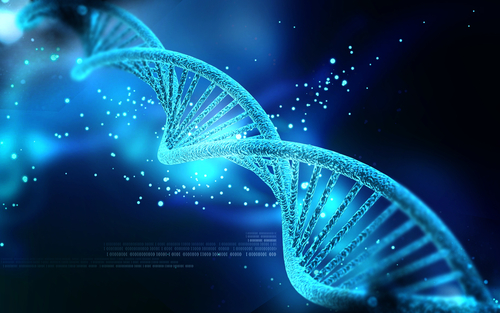
This is true. However, it would be wrong to discount all of evolution simply because at this point in time we cannot confidently explain the way(s) in which life first appeared on Earth. Biochemists have spent years studying primitive nucleic acids and the ways in which they are able to organize themselves into self-replicating and self-sustaining units. As the foundation for cellular biochemistry, these units have undergone astrochemical analyses which suggest they may have originated in space and fallen to Earth. Even if such a scenario turns out to be wrong, and the origin of life on Earth did in fact turn out to be something non-evolutionary, evolution since then still remains a scientific fact.
If humans are descended from monkeys, then why are there still monkeys?

A favorite argument amongst Creationists, this attempt to justify intelligent design completely misses the mark and massively misunderstands evolution. Evolution does not argue that humans evolved from monkeys. Rather, evolution asserts that monkeys, apes, and humans all share a common ancestor. Like all new species, Homo sapiens (humans) evolved after splintering from another, more ape-like species. As apes and monkeys continued to evolve, so too did humans, and their differences have remained distinct since.
Irreducible complexity: The complexity of some biological systems can only be explained by Creation.
Biochemist and Creationist Michael Behe can be credited with coining the phrase “irreducible complexity.” This is used to describe the idea that a complex biological system composed of countless different parts is too complex to have evolved naturally. After all, Occam’s razor states that the simplest answer is usually the best answer when it comes to solving complex problems. But this common Creationist argument has been around for centuries. In 1802, the theologian William Paley wrote that if a pocket watch is found in a field, the most logical explanation is that it was dropped. Paley argued that this analogy worked also for the complex structure of living things, too. The simplest and most logical explanation, he said, is that they are the product of divine invention.
In On the Origin of Species, Darwin responded to Paley by explaining that natural forces of selection — and by extension inherited features — progressively shape the evolution of complex living things. His answer may be more than 150 years old, but Darwin’s initial response has been vindicated by countless scientists and researchers. Though we’ve learned a lot more about the specifics of this process, in short, Darwin was totally right.
Dinosaurs were also created by God, and humans and dinosaurs co-existed.
Now that every museum has a few dozen dinosaur fossils on display, the existence of dinosaurs is not so easily ignored. According to Creationists, humans and dinosaurs existed at the same time. This not only acknowledges the existence of dinosaurs, but also stays true to Biblical teachings. It even provides a convenient explanation for the prominence of dragons in mythology. Creationists support this claim by pointing out that human footprints have been found alongside dinosaur tracks, and that a petrified hammer was found in Cretaceous rocks at a site in London, Texas.
There are myriad possible explanations as to why two footprints ended up next to each other, and few of them can be considered actual evidence for Creationism. The most accurate explanation is still the fossil record. It very effectively supports the idea that dinosaurs died off 65 million years ago, while the first humans walked the earth approximately 200,000 years ago.
The first individual of a species wouldn’t be able to find a mate.
This Creationist argument mistakenly assumes that new organisms popped up one-by-one. This isn’t quite how evolution works. Populations, not individuals, are what evolve, and it all happens very gradually. In what is perhaps the most common mode of speciation (the formation of a species), two populations of the same organism are split apart by geographical elements. As small changes occur in each population, they become more and more different until they no longer have enough in common to interbreed. Of the species that we know to have formed suddenly, all are either hermaphroditic or asexual, and therefore don’t need mates.
There are no transitional fossils to support the theory of evolution.
Though this argument has been disproved hundreds of times, it still manages to make its way into just about every debate over Creationism vs. evolution. Creationists maintain that there should be more transitional fossils. These are fossils that contain characteristics of both the evolved species and its ancestor. Creationists say that few exist. But that isn’t true. We’ve found literally thousands of transitional fossils. They include many specimens of human relatives like various Australopithecines and Neanderthal. Creationists, however, seem intent on maintaining that these human ancestors are just remains of humans who were either disfigured or who suffered from ailments such as arthritis or rickets.
The Second Law of Thermodynamics negates evolution.
According to Creationists, evolution is impossible because the Second Law of Thermodynamics states that everything tends toward disorder. However, scientists respond by pointing out that this is a common perversion of the law. The law actually states that “heat will not spontaneously flow from a colder body to a warmer one or, equivalently, that total entropy (a measure of useful energy) in a closed system will not decrease.” Thus, the Second Law of Thermodynamics does not negate evolution because Earth is not a closed system. Sunlight heats it. Also, entropy is not the same as disorder. Entropy can even be used to produce order as Han and Craighead found in 2000.
In short, order occurring from disorder happens on Earth very frequently. This fact is often accepted by Creationists when attempting to explain other phenomena like the hydrological sorting of fossils during The Flood.
The ice age was caused by The Flood.
Both Creationists and evolutionists can agree that a global ice age occurred. Evolutionists will add that it occurred approximately 110,000 to 10,000 years ago, during the end of the Pleistocene era. What the two groups can’t agree on, however, is what caused that ice age. Scientists point out that a true ice age takes centuries, and therefore doesn’t make sense if Earth is a mere few thousand years old. Myriad factors contribute to the development of an ice age, including changes in the long-term cycle of the earth’s orbit.
Creationists, however, argue that The Flood released a great amount of energy and caused water to rise from underground. This water entered the atmosphere to the effect that snowfall was increased and the Ice Age was initiated.
Radiocarbon dating does not work.
Scientists use radiocarbon dating to discover the approximate age of historic objects. Creationists claim that the decay rates of radioisotopes are not consistent and give inaccurate results do to certain factors like atmospheric changes. The truth is that, for the most part, radiocarbon dating does its job just fine. Scientists do admit that radiocarbon dating has its limits. Samples are often contaminated with older or younger carbon, for example. Subjects more than 50,000 years old cannot accurately be aged via radiocarbon dating. But the latter limitation shouldn’t matter to young-earth Creationists. Scientists are adamant that most of radiocarbon dating’s fallbacks do not have much of an effect on the outcome of the process.
“Survival of the fittest” doesn’t even make sense.
Creationists like to argue that “survival of the fittest,” the conversational term for natural selection, is based on circular reasoning. Specifically: the “fittest” are those who survive, yet it’s those who survive that are deemed “fittest.”
Scientists respond that this typical Creationist argument is over-simplifying the idea of natural selection. In reality, natural selection alludes to differential rates of survival and reproduction — that is, the success of individual offspring in a species as opposed to the entire species. For example, small-beaked finches may reproduce much faster than the large-beaked finches, and it may look after a few generations like the fast-breeding finches are “fittest.” However, if the slow-breeding large-beaked finches can better crush the seeds for food, it may not be long before they are considered the top dogs.
Natural selection might explain microevolution, but it doesn’t explain the origin of new species.
Scientists have written extensively about the ways in which natural selection produces new species. In one common scenario, allopatry, a new species is formed when its biological ancestors become separated from the rest of its population by geographical boundaries and undergo a series of selective pressures. Though evolutionary biologists are the most knowledgeable about natural selection, most are open to the idea that there are other natural –not supernatural — forces that might also lead to the origin of new species.
Even evolutionary biologists disagree about much of evolution.
Of course they do. But the topics about which they disagree include things like how speciation happens. There is ongoing discussion about the possible ancestral relationship between birds and dinosaurs, and the rate of evolutionary change. Notice none of those topics include whether or not evolution is scientific fact.
Statistically speaking, the odds of a living cell appearing by chance are slim to none.
In the 1980s, Richard Hardison, a college professor at Glendale College, composed a computer program which could randomly generate phrases while preserving the positions of individual letters that happened to be correctly placed. The purpose of the program was to see how long it would take for “TOBEORNOTTOBE” to be randomly generated. It ended up taking only 90 seconds. Even more impressive, the computer program was able to randomly generate the entirety of Shakespeare’s Hamlet in just four days.
That’s cool, but does it matter? Yes. To say that evolution is completely dependent upon chance is to totally misunderstand the entire process. Natural selection passes on the seemingly random adaptations that are desirable, while eliminating changes that are undesirable. It does the equivalent of the computer program keeping the correct letters and continuing to generate the rest. Because this process remains consistent, natural selection is able to steer evolution in one sophisticated direction.
Mutations can only eliminate — not create — traits, and yet are essential to the theory of evolution.
Actually, there are quite a few natural examples of new traits developing in species. The most common of these mutations are called point mutations. These are mutations that occur at exact points in an organism’s DNA. A few examples include:
-
- the abnormal growth of legs where antennae should grow on a fruit fly
- the evolution of multicellularity in a unicellular green algae
- E. coli’s adapted ability to hydrolyze galactosylarabinose
- the adapted ability of a bacterium to digest nylon
In every instance of a mutation, natural selection tests for possible uses, then either maintains the adaption or it dies out.
Evolution is too random to make sense.
It’s more than likely that those who make this common Creationist argument do not fully understand the idea of natural selection. There is nothing random about natural selection. And since natural selection is vital to evolution, there is nothing random about evolution. When an organism reproduces, its genes enter into the gene pool, where they are then passed onto the next generation of that organism. The genes and any adaptations are tested by the process of reproduction. Useful, desirable genes survive from generation to generation. Undesirable genes simply die out and cannot be passed on.
Evolution can’t be responsible for morality and the human desire to find meaning in life.
Scientists will be the first to admit that there is much, much more about life that we’ve yet to learn. But to argue something like “evolution can’t be responsible for morality” is akin to saying that since evolution does not explain everything, it’s therefore not correct about anything else. It’s likely that there will come a time when evolutionary science will be able to explain morality and the human desire to find meaning in life. Some scientists might even assert that we’re already on our way there with the many new brain mapping studies. In short, we’re able to map brain flourishes during moments or associations of pleasure, and study the resulting behavior.
Why do evolutionists reject God so quickly, but then embrace the idea that aliens are responsible for intelligent design? It’s God that these evolutionists reject, not Creationism.
Umm, what? Evolutionary biologists, as a whole, simply do not believe in alien creators any more than they believe in a creator that goes by the name God. According to one well-known scientific blogger, however, scientists would be likely to believe in the idea of a creator — any creator — if the scientific evidence pointed in that direction. Alas, it just doesn’t.
Evolution is a religion unto itself.
This relatively new argument presumably found its way into the Creationists’ toolbox of arguments in an effort to make Creationism sound more scientific. This was around the same time the semi-scientific-sounding “intelligent design” became a common phrase. It essentially argues that evolutionists worship Darwin, aliens, or just about anything other than God. The scientific community’s response is simply that no one has ever mentioned anything related to an “evolution church.” Also, there has never been any sort of supernatural figure mentioned in the theory of evolution. In short, there’s nothing to worship.
Evolution promotes racism.
Actually, evolution promotes exactly the opposite of racism. Before Darwinism, people grouped all living things into “kinds,” which led to ideas of things being separate and distinct. Evolution, on the other hand, proves that humans are genetically homogenous. In other words, we’re all one biological race. Evolution refutes racism. It could be argued that the prevalence of racism has generally decreased since evolution became a widely understood fact.
If things weren’t created and evolution is true, then why aren’t new organisms still being created today?
For this to be a valid Creationist argument, conditions would have to be the same today as they were when life first appeared. In reality, conditions in the past were totally different. There was little to no molecular oxygen in the atmosphere and oceans then. This kept highly reactive oxygen from interfering with the development of life. Perhaps most importantly, there wasn’t any life around then. If any life is being created in today’s conditions, chances are it will be scavenged or eaten before it has the chance to form.
Men have fewer ribs than women.
They don’t, actually. This surprisingly common Creationist argument almost certainly stems from the Genesis account in which God takes one of Adam’s ribs to form the first woman, Eve. It has likely been perpetuated by the fact that most male mammals (except humans ) have a baculum. This is a specific bone for stiffening the penis. It’s also worth mentioning that the Hebrew language has does not have specific words for “penis” or “rib.” This means other words would have had to have been used, and these other words could have instigated the subsequent “confusion.”
The release of endorphins at death supports the idea of a merciful creator, not evolution.
Scientists have found that at death, the human body releases endorphins to help make the act of dying less traumatic. Creationists argue that such a phenomenon can only be the work of a merciful creator. Evolutionists point out, however, that the body releases endorphins at even the slightest sign of trauma in order to relieve any stress or pain. In evolutionary terms, the release of endorphins could keep injured people awake and aware enough to take life-saving actions. If that’s the case, then the release of endorphins certainly does support the idea of evolution.
Evolution doesn’t account for personality or emotions.
This common Creationist argument asserts that there is no way evolution can account for human personality or emotion — the things which set man apart from the animals. But scientists respond by pointing out that dogs, cats, apes, horses, and just about every other animal exhibit personalities, too. This suggests that once the brain and consciousness have evolved, personality traits and emotions are a natural development. Some scientists go even further by arguing that both personality and emotion have selective advantages. Emotions serve to motivate humans [towards survival], while personality plays a large role in forming relationships.
There is not enough ______ for an old earth.
Creationists today are far more sophisticated than they were a generation ago. The idea that there isn’t enough sediment on the ocean floor (or helium in the atmosphere, or even moon dust on the surface of the moon) is one of their favorite arguments as they attempt to prove Earth is far younger than scientists assert.
In the early days of the space race, a preliminary number for moon dust accumulation (14 million tons per year on earth) was thrown out into the world, and almost instantly retracted once we learned more. Helium is an extremely light atom, and it can easily escape the upper atmosphere. Thus, the amount of helium in the atmosphere today has very little to do with the age of Earth. Finally, the thickness of sediment on the ocean floor varies from spot to spot, but has always proven consistent with the age of that spot. For example, at the mid-Atlantic Ridge, where new ocean crust is forming, the thickness is practically zero, while the continental margins have about 150 million years’ worth of ocean floor sediment.
If I believe in evolution, I can’t believe in God.
This is an extremely common misconception among Creationists, yet it’s totally understandable. Many people are hesitant to accept evolution as scientific fact because they’re afraid it might make them less of a Christian. A vast number of Christians believe that God created the universe so that it could evolve on its own. The Catholic Church has officially accepted evolution since the 1950s. Pope Benedict has even gone on record to say that the argument between Creationism and evolution is “absurd.”
Related Resources:
- Top 10 Biology, Biological and Biomedical Sciences Degree Programs at Christian Colleges
- Is an Internship Required for a Master’s in Biomedical Science?
- What Can I Do with a Master’s in Biomedical Science?
- What is Biomedical Science?
- 5 Blogs on Biomedical Science
- 5 Top Careers in Biomedical Science
- 5 Unique Career Settings in Biological Science
Sources:

